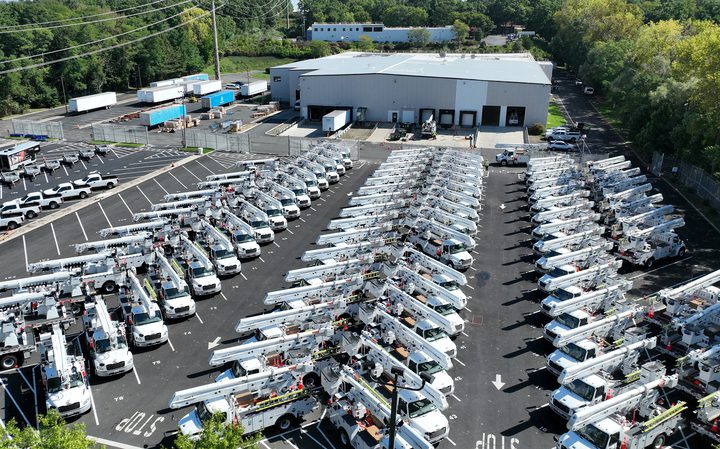Con Edison’s Investments and Climate Research Prevent Outages, Protect Customers
NEW YORK – Nearly 10 years after Superstorm Sandy took lives, wrecked homes and caused widespread power outages, Con Edison has fortified its energy systems and is planning for the hotter, stormier weather that climate change will continue to bring.
The company’s investments in its electric delivery system over the past decade have prevented 1.1 million weather-related customer outages. Those upgrades have included placing overhead lines underground, installing stronger poles and wires and deploying smart switches on lines to minimize service interruptions when a tree or branch falls on the wire.
Con Edison’s climate change experts consult with peers in private industry and academia to stay abreast of the latest climate science. Con Edison is using those findings to plan investments that will make its energy systems more resilient and reliable.
The company has also improved its response to weather events to get customers back in service faster and its communications with customers before and during emergencies.
“Our climate change studies are driving the strategic infrastructure investments needed to protect customers and prevent outages,” said Tim Cawley, the chairman and chief executive of Con Edison. “Our customers, and the region as a whole, are experiencing increasingly more frequent and severe weather events. We must continue to address climate change by planning, building and operating a more resilient grid.”
Climate Change Expertise
The region’s future will bring more heat waves, severe floods, heavier snow and stronger winds. The changing climate threatens the company’s electric, gas and steam systems, according to a study the company’s experts developed with ICF and Columbia University’s Lamont-Doherty Earth Observatory.
Con Edison followed up with a report detailing how the company will integrate climate considerations into power supply forecasting, planning, engineering, operations, and emergency response practices.
“The work by Con Edison to anticipate and prepare for extreme events caused or worsened by climate change advances the global state of the art,” said Michael Gerrard, director of the Sabin Center for Climate Change Law at Columbia Law School. “Recent hurricanes that have knocked out the power systems in Florida, Puerto Rico, and other places, and extreme heat that nearly caused blackouts in California, highlight the importance of these efforts.”
The company now builds new facilities that are expected to be in operation for 80 years to withstand flooding from a 100-year storm plus an additional three feet of sea level rise.
Building Reliability and Resilience
In the aftermath of Superstorm Sandy, Con Edison developed a number of system resiliency plans and invested $1 billion in strengthening its energy systems. Then, following two destructive storms in March 2018, the company initiated a $100 million program to further fortify its systems in Westchester County.
To address the impact of flooding events, Con Edison has hardened its delivery system by raising equipment, building walls, and installing pumps. Crews have also installed submersible transformers and other equipment that can withstand a deluge of salty water and stay in service.
Con Edison also reconfigured two electrical networks in Lower Manhattan to better withstand severe flooding events. New switching technology in those networks allows company operators to selectively turn off service to flood impacted areas near the coast while allowing inland customers to stay in service.

The company last year placed certain overhead lines in the Middle Village area of Queens and in northern Westchester underground. That protects the equipment from storms that can knock branches and trees onto lines.
Con Edison has a proposal pending with the state to make additional storm fortification improvements, including placing more overhead lines underground.
Improved Storm Response
A fleet of new utility trucks allows mutual aid workers to arrive by plane and get right to the task of restoring service to Con Edison customers after a storm.
Con Edison marshalled a massive response to Sandy, bringing in more than 5,000 external workers, some from as far away as California, to restore service.
But the trucks, which are in Pomona, about 40 miles north of New York City, speed restoration because the company can fly workers to the area, rather than wait for them to arrive in their own vehicles.
The company took delivery of 90 trucks this year. The trucks, leased property and other expenses represent an investment of about $34 million.

The company also has improved on its storm response by negotiating contracts that guarantee access to outside workers when the company needs them. Since the March 2018 storms, the company has increased its mutual aid resource contracts by seven times and gotten access to more than 1,000 workers.
Con Edison is a subsidiary of Consolidated Edison, Inc. [NYSE: ED], one of the nation’s largest investor-owned energy companies, with approximately $14 billion in annual revenues and $64 billion in assets. The utility delivers electricity, natural gas and steam, and serves 3.5 million customers in New York City and Westchester County. Through Consolidated Edison Inc.’s subsidiary, Con Edison Clean Energy Businesses, the company is the second-largest owner of solar electric projects in North America.